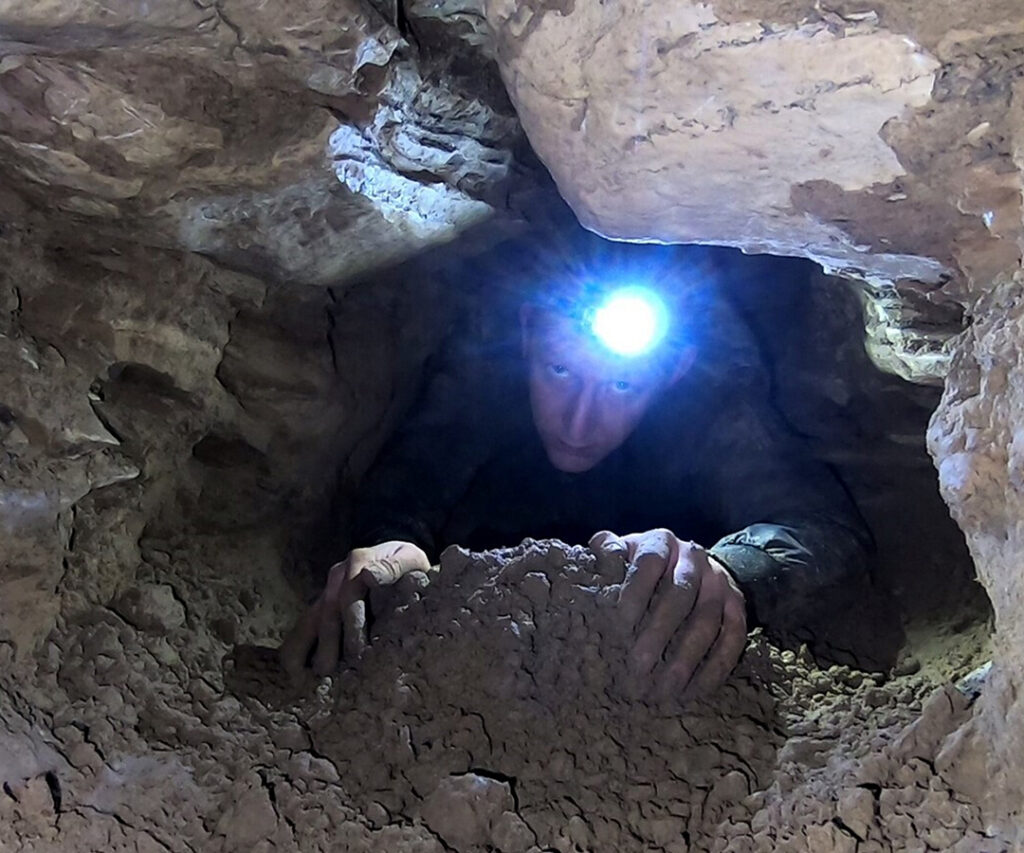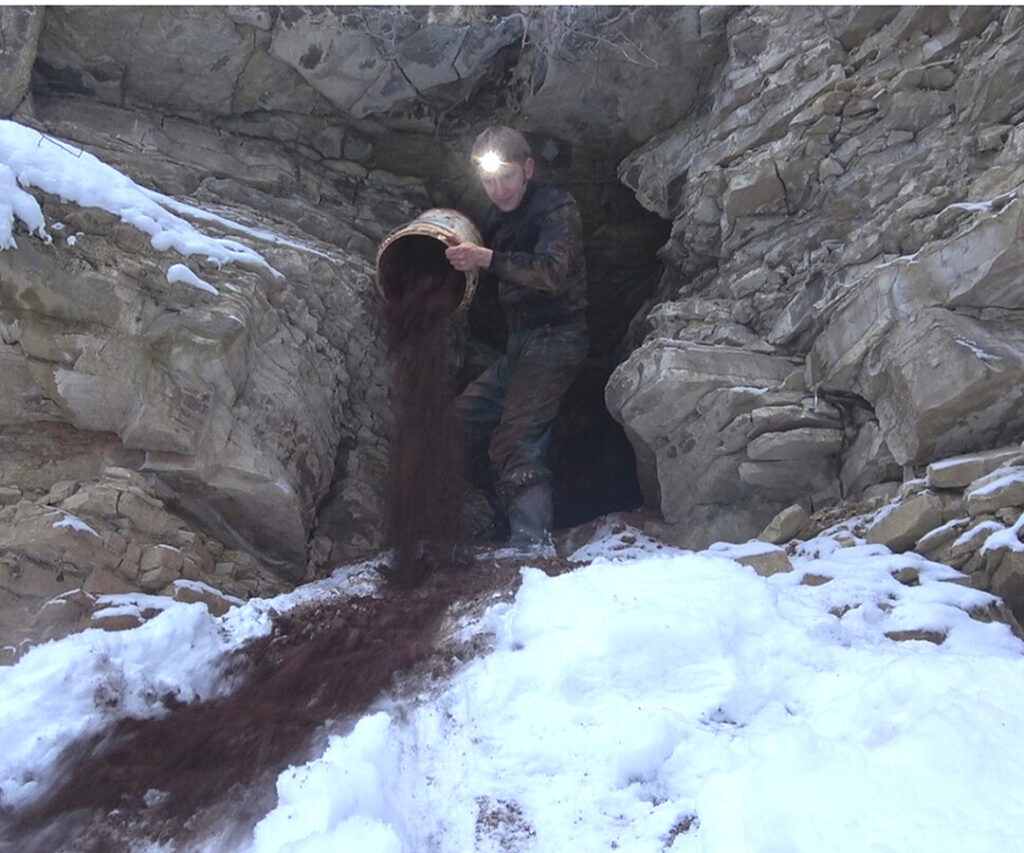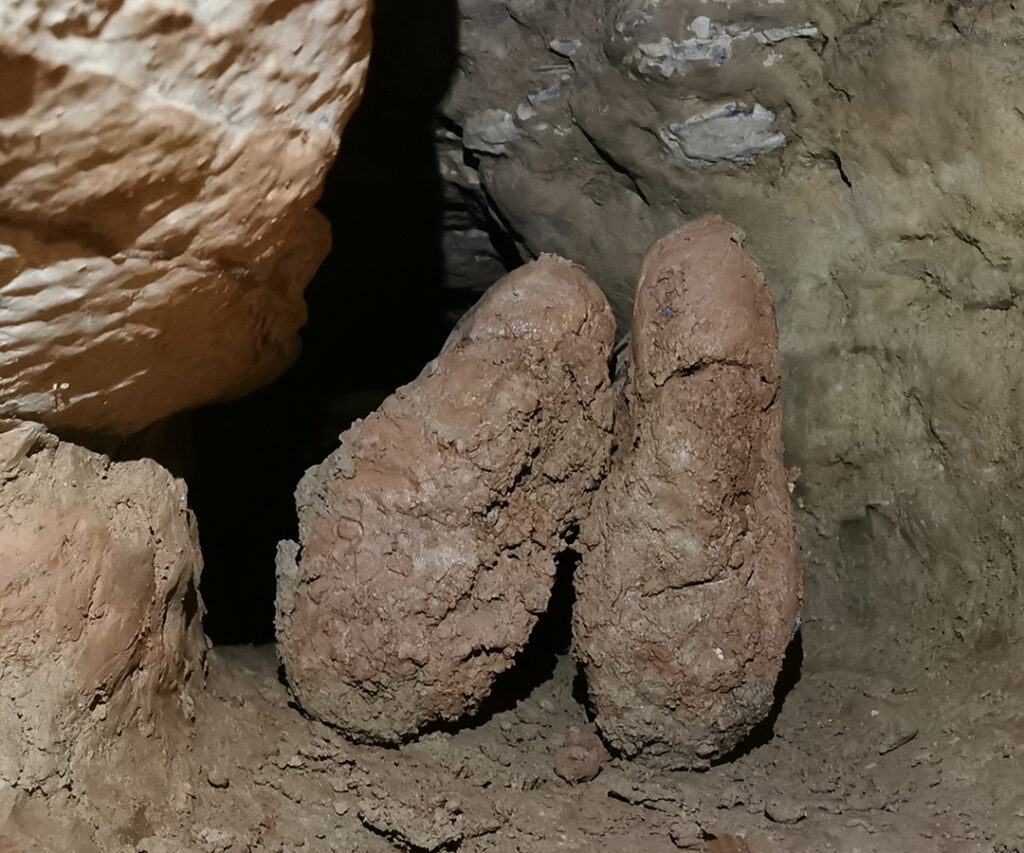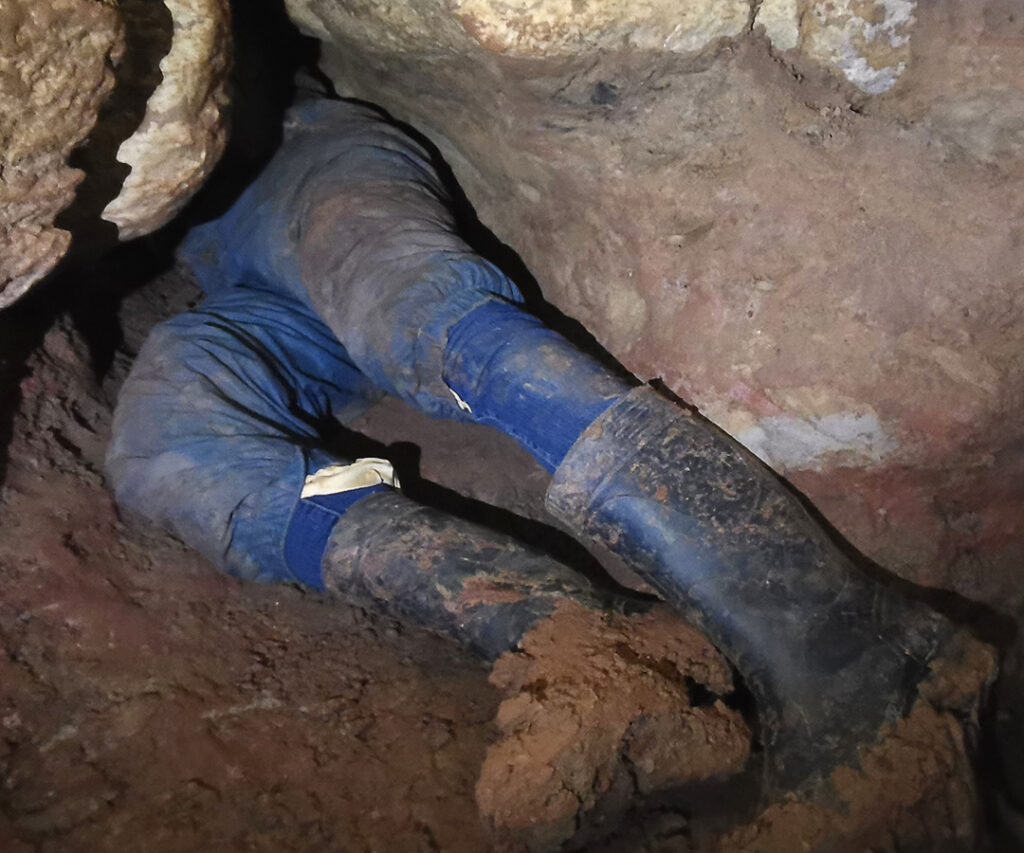Current and announcment
The Continuation – exhibition of Mikołaj Szpaczyński’s works in Small Space
Cleaning out silt-clogged caves has become Mikołaj Szpaczyński’s current art practice, combining sculptural effort, land art tradition with performance and conceptual approaches.
Contrary to traditional, vertical statues commemorating a significant event or a figure, Szpaczyński’s method involves probing into the earth’s depths and draws on negative imaging technique using horizontal stratified flows of air and water. This hollowed-out tribute to the earth has been supplemented with a chart of the underground region, methodically created by the artist in the conditions of intense physical effort that included crawling and squeezing through the cave channels. It is a months-long struggle with the body that keeps getting stuck in narrow passageways, yet manages to slither further and further – in this stifling and confined space, a human becomes acquainted with their physical shape.
Szpaczyński’s creative manoeuvres might look like he wants to hide underground, bringing to mind numerous questions, which the artist answers, to some extent, in his documentary video, revealing the claustrophobic damp pothole. The close-ups show the beam from the electric torch sweeping over the rocks. In subsequent shots, we can also hear the patter of loose stones escaping from under the artist’s feet and fingers, some rustles noises and quick breathing.
In these underground depths, the artist can read the history recorded in geological strata and falls to thinking about time flow. From the floor and up to the ceiling, the cave became entirely filled with silt. The clay hid the cavern hundred thousands or perhaps even millions of years before the humans and has kept it hidden until recently. It is like a capsule from which time and space had been pushed away by lumpy clay – Szpaczyński says. The history of the earth, now revealed in the cave corridors, has been inscribed in the fossilized remnants of plants, animals, coral reefs and cephalopods. Marked are the changing shorelines of one-time seas and the routes of long-ago rivers, and there is evidence of past volcano eruptions, droughts and ice ages.
Mikołaj Szpaczyński’s cave meditations seem to be a form of paying tribute to earth, as if they were echoes of the ancient mystery cults, reconstructing the cycle of germination, flowering, fruiting and dying. Resultant from the processes activated by microorganisms from the Actinobacteria family and the decomposition of organic matter, there is the hypnotic aroma of the unearthed soil, in which one can delight, imagining it to be a part of a long-forgotten ritual of celebrating the world of matter and seeing it as a prelude to the unavoidable finale of each living body.
Curator
Marta Lisok
Opening of the exhibition — 12 February 2021, from 10.00 (due to the current epidemic situation there will be no vernissage).
Exhibition tour with the artist Mikołaj Szpaczyński on February 12, 2021, from from 4 p.m. to 6 p.m. (in these hours free admission).
The exhibition will last until March 21, 2021.

Mikołaj Szpaczyński (born in 1989) is a graduate from the Chair of Painting of the Academy of Fine Arts in Katowice (2017), currently a doctoral student at the Faculty of Intermedia at the Academy of Arts in Kraków. He works across film, sculpture and installation. Awarded with honorary mentions in the Young Wolves (Młode Wilki) competition (2016) and the 13th Geppert Competition (2020). Selected through an






